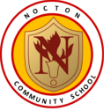Computing
Please see below.
A Vision for Computing
To ensure that our Computing curriculum delivers cumulative knowledge and builds on prior skills right through from Reception to Year 6 - therefore supporting our pupils to know more and remember more as they flourish in this modern, digital world.
Opening Doors, Opening Minds – Our Computing curriculum encourages our pupils to build upon, and learn, new skills and knowledge due to the progressive implementation in place. As each and every one of our pupils, classes, teachers and schools are unique, we provide opportunities for computing exploration and inquisitiveness – which supports and promotes an ambitious attitude where there is no ceiling in place. Our pupils can aim high, dream big and live life in all its fullness.
Success – Our varied curriculum promotes achievement and positivity for the future
Happiness – We provide fun and engaging opportunities
Inspiration – Pupils learn the power and influence of technology and computing
Nurture – Our progressive curriculum supports growth as the pupils journey through school
Everyone – All pupils are given appropriate and engaging opportunities to enjoy the computing curriculum
Curriculum Drivers
-
Aspiration: Opportunities for all to succeed and be the best they can be – Pupils will learn, through Information Technology, to communicate effectively, handle data sensitively and create ambitious multimedia that they can be proud of.
-
Worldly Wise: Awareness and respect of the wider world and the people within it – Pupils will learn, through Computer Science and specifically Computational Thinking, how to solve problems and apply these solutions in the real world. They will also learn how to network responsibly – reaching a global audience through the internet.
-
Well-being: Nurturing all to be healthy and happy – Pupils will learn, through Digital Literacy, how to maintain a positive online reputation, successfully manage online relationships, how to nurture their self-image and identity and how to keep themselves and others safe online.
|
Computer Science |
Digital Literacy |
Information Technology |
||
|
Programming and Theory |
E-Safety & Research |
Communication |
Data Handling |
Multimedia |
|
Computational Thinking Coding/Programming Computer Networks |
Self-Image and Identity Online Relationships Online Reputation Online Bullying Managing Online Information Health, Wellbeing and Lifestyle Privacy and Security Copyright and Ownership |
Word Processing/Typing Presentations, Web Design and eBook Creation |
Graphs, Databases, Spreadsheets, Forms, Questionnaires and Charts (including the use of formulae) |
Animation Video creation Photography and Digital Art Augmented reality and Virtual Reality Sound
|
The Computing Curriculum can be divided into three inter-related strands:
-
Computer Science
-
Digital Literacy
-
Information Technology
Computer Science:
Computer science has been broken down into three strands: Computational Thinking, Programming/Coding and Computer Networks. Computational Thinking is all about solving problems effectively with or without a computer. Computational thinking is about looking at a problem in a way in which a computer can help us to solve it. This is a two-step process: 1. First, we think about the sequence of steps (an algorithm) needed to solve a problem 2. Then, we use our technical skills to get the computer working on the problem as we implement our algorithm as code. Programming/Coding is one application of computational thinking. Learners will write algorithms and implement these as code. They also need to be able to find mistakes and fix them (debugging). Once learners have created a program they need to learn to evaluate and look at different ways to achieve the same goal and which method is most appropriate. As learners get older the programs they write will become more complex using a range of constructs such as sequence, selection, repetition and variables in their programs. KS2 pupils also require knowledge of networks, such as the Internet, and how searches are performed.
Digital Literacy:
Today’s children and young people are growing up in a digital world. As they grow older, it is crucial that they learn to balance the benefits offered by technology with a critical awareness of their own and other’s online behaviour, and develop effective strategies for staying safe and making a positive contribution online. E-Safety and research teach the skills and understanding that children and young people should have the opportunity to develop at different ages and stages. It highlights what a child should know in terms of current online technology, its influence on behaviour and development, and what skills they need to be able to navigate it safely.
Information Technology:
This part of the curriculum is essentially most of the old ICT curriculum. Most of these objectives should be covered by using tech creatively across the rest of the curriculum, although it will be necessary to teach some discrete skills. Learners should know that technology is everywhere, be able to identify the technology they encounter and have a growing understanding of how it works. This part of computing is broken down into activities for word processing/typing, spreadsheets and data handling, presentation, eBook creation, web design, animation, video creation, photography and art, sound and AR & VR. When using these ideas to create content everything should link closely to digital literacy – awareness of audience and good design principles. Pupils should experience a range of different apps and software. Lower down the school, the teacher will select the programs to use but as pupils get older they should be encouraged to make their own choices. Learners also need to know how to store and organise their files online and locally so that they can easily be found again.
